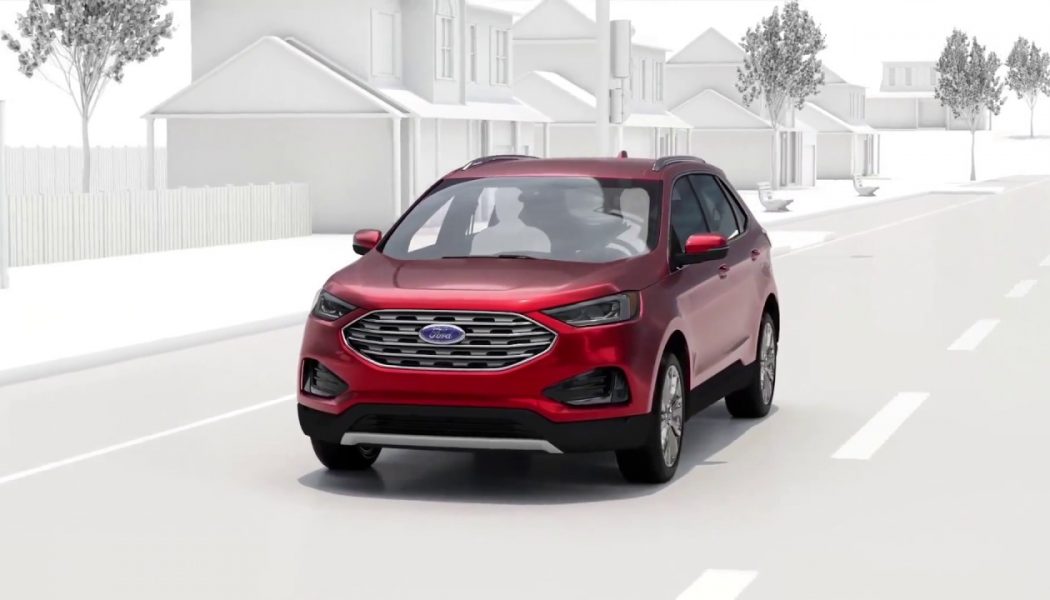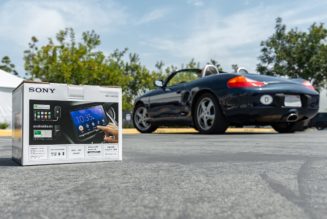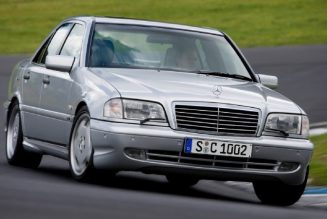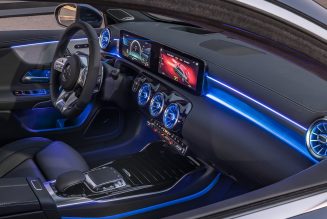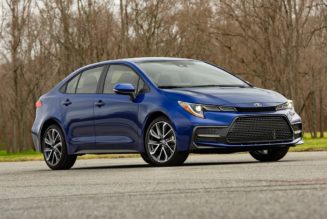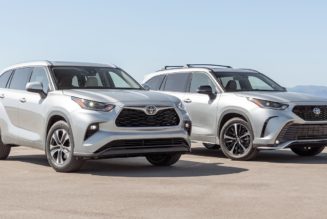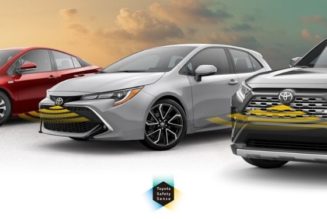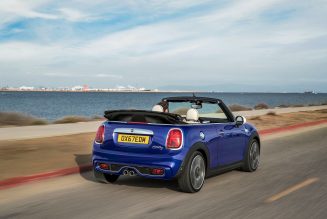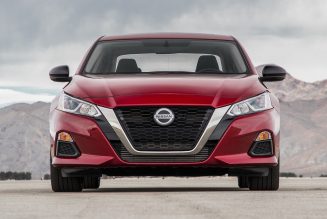The automaker that implemented mass production and affordable cars over 100 years ago is now making modern driver-assist features more accessible. Ford offers the Co-Pilot360 active safety suite in some form on almost every model it sells. (Ford GT drivers miss out, but something tells us they won’t mind.) Read on for all the details on Ford Co-Pilot360.
Ford Co-Pilot360 Features
Ford offers all the active safety features you’d expect in a modern vehicle. That starts with Pre-Collision Assist (also called forward collision warning) and Automatic Emergency Braking (AEB). If the car is rapidly approaching a vehicle or pedestrian ahead to the point where sensors detect an impending collision, the system will issue an audiovisual warning before engaging the brakes if the driver doesn’t do so soon enough. Evasive Steering Assist can help avoid or mitigate a collision if there isn’t enough room to brake.
Next on the list is a Blind Spot Information System (BLIS), sometimes referred to as blind-spot monitoring, with cross-traffic alert. This system lights up a small icon on the corresponding side mirror when there is a vehicle in your blind spot, and cross-traffic alert issues a warning when your vehicle is in reverse and another car is approaching from the side.
Auto high-beams perform exactly the function you’d expect. Driving at night, the system will toggle between high- and low-beam headlights to provide superior visibility when the coast is clear without blinding oncoming drivers. The Lane-Keeping System (also known as lane departure warning and lane keep assist) issues an alert when your vehicle begins to drift out of the lane without an active turn signal and can apply steering to redirect the vehicle.
Lane keeping is different from Lane Centering, which Ford includes as part of its Intelligent Adaptive Cruise Control system, along with Speed Sign Recognition. Lane Centering takes more control of the vehicle’s steering to keep it centered in the lane. We like that on vehicles equipped with Lane Centering, you can choose if you want to use the more advanced tech or just lane departure prevention for a more natural steering feel.
The adaptive cruise setup allows drivers to set a desired speed, which the vehicle will maintain until there is another vehicle ahead, at which point it will engage the brakes to maintain the set following distance. When we experienced this system in the Explorer, it adjusted well (if slowly) to speed limits but left too large a gap in front for other cars to cut you off.
What Is BlueCruise?
Ford’s next generation of active safety functionality starts with the 2021 Mustang Mach-E and 2021 F-150. Those two vehicles are available with a Co-Pilot360 Active 2.0 Prep package that, starting in the second half of 2021, will include Ford’s new BlueCruise Level 2 driver-assist tech. The new system will enable true hands-free driving on over 100,000 miles of highway in the United States and Canada, like General Motors’ Super Cruise.
Which Ford Models Have Active Safety Tech?
SUVs
The humble subcompact EcoSport is the only Ford vehicle with no driver-assist features as standard; BLIS and cross-traffic alert are optional on the EcoSport SE and standard on the Titanium. Stepping up to a base Escape adds automatic emergency braking, the lane keeping system, BLIS and cross-traffic alert, and auto high-beams. Adaptive cruise control with lane centering and speed sign recognition are optional on the SE and SEL or standard on the Titanium.
All Bronco Sport trims include automatic emergency braking, the lane keeping system, blind-spot monitoring, cross-traffic alert, and automatic high-beams as standard. All but the base model offer optional adaptive cruise with lane centering and speed sign recognition. For the full-size Bronco, the Mid package (optional on Big Bend, Black Diamond, and Badlands or standard on the Outer Banks and Wildtrak trims) includes automatic emergency braking, blind-spot monitoring with cross-traffic alert, the lane keeping system, and auto high-beams. The Lux package, which is optional on Outer Banks trims and higher, adds Evasive Steering Assist and adaptive cruise.
Ford Edge models include automatic high-beams, BLIS and cross-traffic alert, lane keep assist, and automatic emergency braking as standard. The adaptive cruise system with lane centering and speed sign recognition is optional on SEL trims and higher.
In the three-row Explorer, automatic high-beams, lane keeping, blind-spot/cross-traffic alert, and auto emergency braking are standard on all models. Evasive steering and the adaptive cruise collection are optional on the XLT or standard on the Limited. Explorer ST and Platinum models add a semi-autonomous Active Park Assist 2.0 system plus low-speed rear emergency braking. Looking at Ford’s largest SUV, the Expedition, auto high beams, blind-spot and cross-traffic alert, lane keeping, and emergency braking are included on all trims. The adaptive cruise features are optional on XLT models and standard on Limited trims and above.
Ford’s most advanced active safety features are found on the electric Mustang Mach-E. Standard features include automatic high beams, BLIS and cross-traffic alert, lane keeping, and front and rear automatic emergency braking, but also the adaptive cruise tech and evasive steering assist. A Co-Pilot360 Active 2.0 Prep package—optional on Select and GT or standard on California Route 1 and Premium trims—includes the hardware necessary for advanced semi-autonomous driving tech and is expected to make its debut in the third quarter 2021.
Vans and Trucks
On to work vehicles, the Transit Connect includes automatic emergency braking on all trims. Blind-spot monitoring and rear cross-traffic alert plus lane keeping and automatic high-beams are standard on XLT and Titanium models. The compact Ranger pickup includes standard emergency braking. Blind-spot and cross-traffic features plus lane keeping are optional on the Ranger XL or standard on XLT models. Adaptive cruise tech is optional on the XLT and standard on a Lariat trim with the 501A equipment package.
Ford’s larger trucks are plenty safe, too. Super Duty models include no active safety suite features as standard, but XLT models add auto high-beams, blind-spot monitoring and rear cross-traffic alert, and automatic emergency braking. Platinum trims and above include the adaptive cruise features.
Having just been refreshed, the F-150 offers more content. XL trims include emergency braking, lane keeping, and automatic high-beams. Blind-spot monitoring and rear cross-traffic alert are optional on base XL models or standard on XLT trims and higher. The XLT and Lariat also offer optional adaptive cruise and evasive steering assist, and Lariat models offer the semi-autonomous Prep package. King Ranch trims include the adaptive cruise features as standard, and the F-150 Limited includes everything we’ve mentioned including the Co-Pilot360 Active 2.0 Prep package.
Which Fords Are the Safest?
A few Ford models are especially strong performers in safety testing conducted by the IIHS, which evaluates a vehicle’s active safety tech as well as its crashworthiness and headlight performance. The Escape is a 2021 Top Safety Pick when equipped with the Titanium trim’s LED headlights, but the standard headlights on other trims have inadequate visibility.
The story is the same with the 2021 TSP-winning Ford Edge, which requires optional LED headlights on the Titanium and ST trims. The Edge’s standard LEDs get the lowest headlight rating of Poor due to excessive glare. The safest vehicle in Ford’s fleet is the Explorer. That car earns a 2021 Top Safety Pick+, meaning all models regardless of options are some of the safest vehicles on the road.
